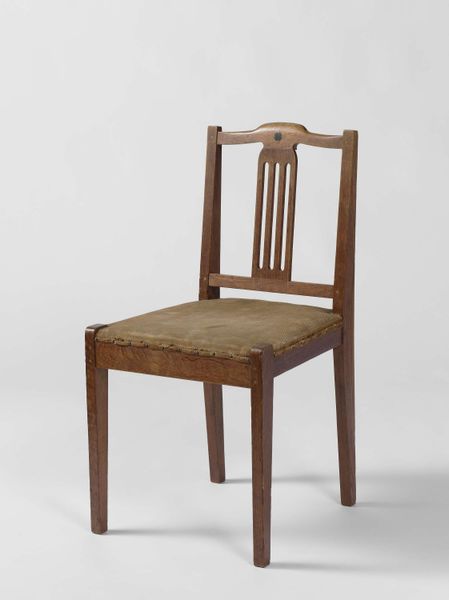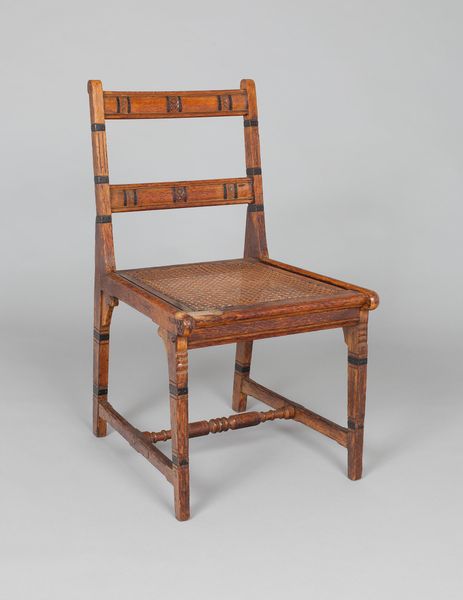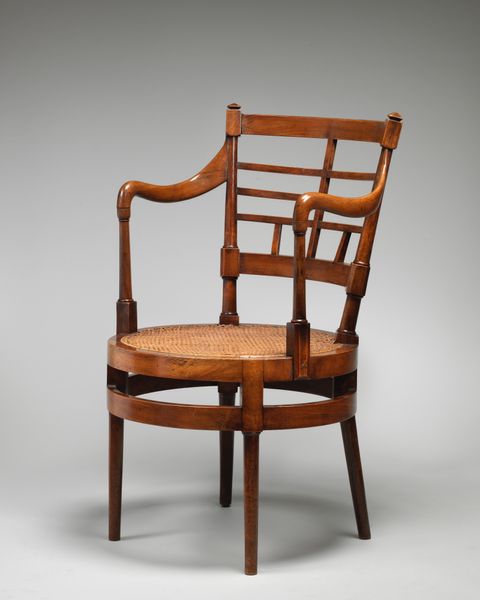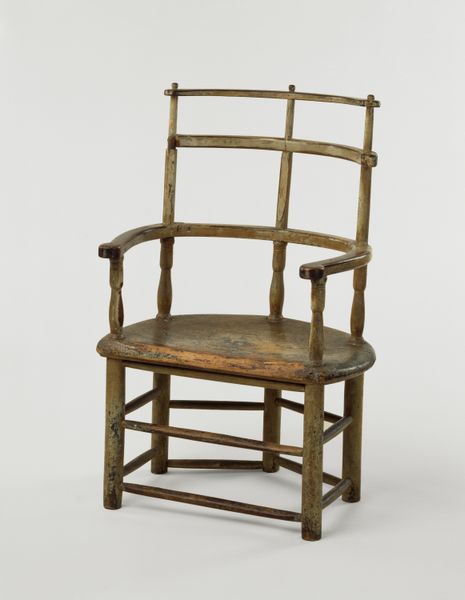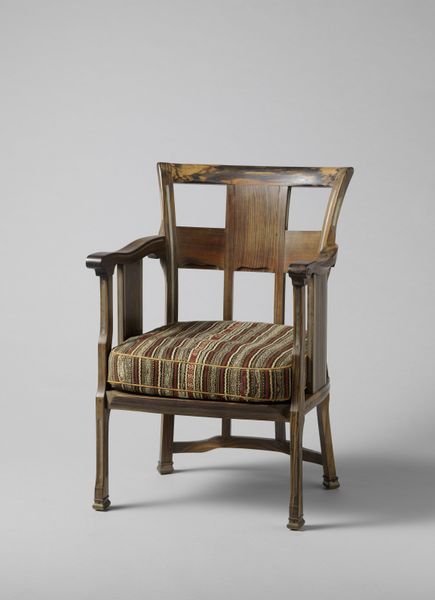
wood
#
germany
#
arts-&-crafts-movement
#
furniture
#
form
#
geometric
#
wood
#
decorative-art
Dimensions: 80.7 × 55.3 cm (31 3/4 × 21 3/4 in.)
Copyright: Public Domain
Editor: So, this is Richard Riemerschmid’s "Side Chair," crafted between 1898 and 1899. It's made of wood and part of the Arts and Crafts movement. It strikes me as incredibly simple, almost austere, but there’s something really compelling in its clean lines. What stands out to you? Curator: Initially, the geometric composition commands attention. Consider the interplay of diagonal supports against the strict verticals of the legs. How do these contrasting angles affect the perceived stability and form of the piece? Editor: I see what you mean, it’s stable because of the diagonals. But I feel like it’s missing any ornament that would make the shape look even more pleasing. Curator: But doesn't the very lack of superfluous ornamentation foreground the beauty inherent in the materials themselves? The texture of the wood grain, the patination of the seat— these are emphasized precisely because there is nothing else to distract us. We are compelled to analyze how each element relates to the total, unified structure. Editor: Okay, now that you point it out, it does draw attention to the material and makes it pleasing despite the absence of more traditional designs. The simple shape has its own beauty. Curator: Precisely. Riemerschmid here investigates how basic geometric elements create something that transcends pure function. This transcends merely “chairness” to address the question of how form manifests meaning. Editor: I see what you mean. The form itself becomes the focal point. Thanks for guiding me. I am actually going to look for the other pieces created with the Arts and Crafts movement principles in mind. Curator: Indeed! This Side Chair exemplifies that tenet beautifully. Analyzing form in such a way is very revealing.
Comments
No comments
Be the first to comment and join the conversation on the ultimate creative platform.


